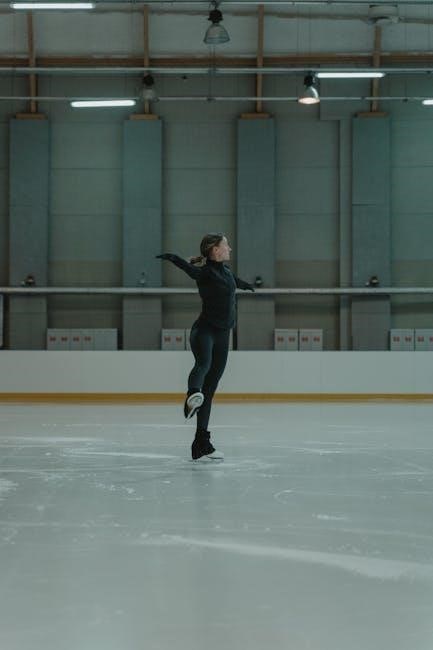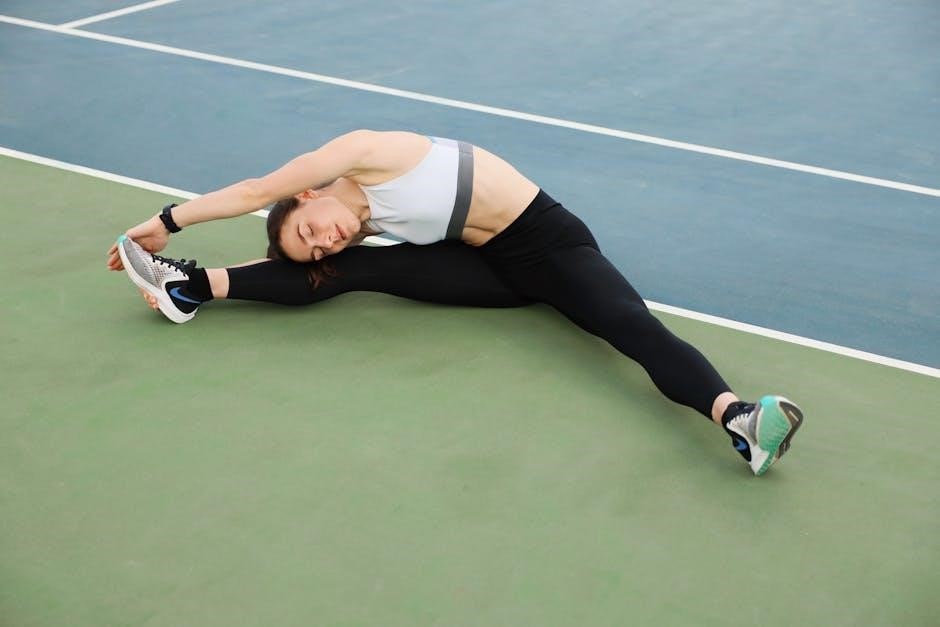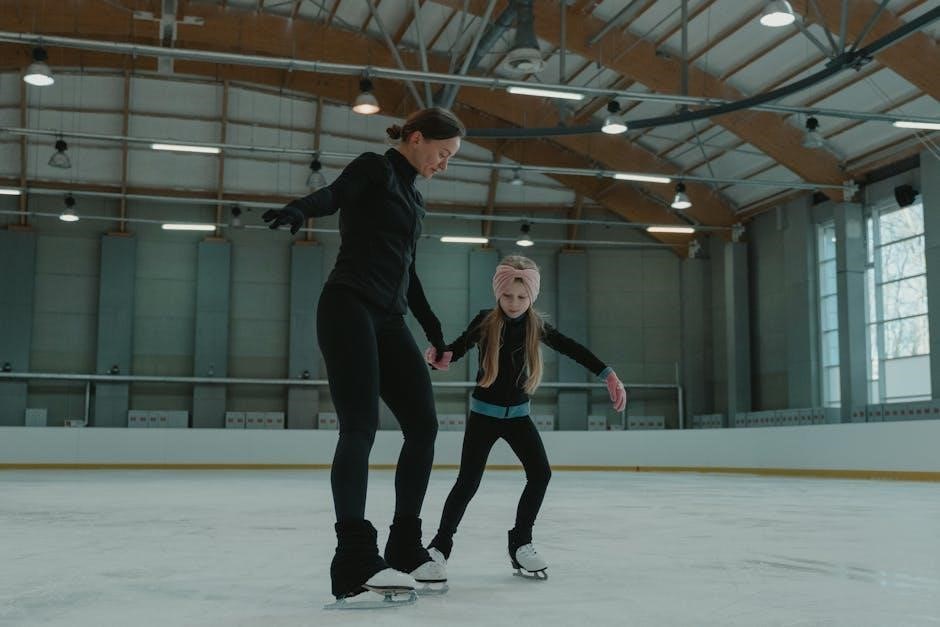The vastus medialis muscle is part of the quadriceps group, located on the medial (inner) aspect of the thigh. It plays a crucial role in knee extension, stabilization, and movement. Strengthening this muscle is essential for maintaining proper knee function, preventing injuries, and enhancing athletic performance. Weakness in the vastus medialis can lead to knee pain and instability, making targeted exercises vital for rehabilitation and overall lower limb health.
1.1 Anatomy and Function of the Vastus Medialis
The vastus medialis is one of the four quadriceps muscles, located on the inner thigh. It plays a key role in knee extension and stabilization, ensuring proper patellar tracking. Its oblique fibers assist in pulling the patella medially, preventing lateral displacement. This muscle is crucial for maintaining knee alignment and facilitating smooth movement during activities like walking and climbing stairs. Proper function of the vastus medialis is essential for overall knee health and preventing injuries.
1.2 Importance of the Vastus Medialis in Knee Stability
The vastus medialis is critical for knee stability, ensuring proper patellar alignment and movement. Weakness in this muscle can lead to patellar maltracking, causing knee pain and increasing the risk of injuries like cartilage damage. It helps distribute forces evenly across the knee joint, preventing excessive strain on the inner knee structures. Strengthening the vastus medialis is essential for maintaining knee stability, especially for individuals with patellofemoral pain syndrome or muscle imbalances.
Benefits of Strengthening the Vastus Medialis
Strengthening the vastus medialis reduces knee pain, improves joint function, prevents cartilage injuries, and enhances athletic performance, while promoting overall knee health and stability.
2.1 Reducing Knee Pain and Improving Joint Function
Strengthening the vastus medialis helps alleviate knee pain by correcting muscle imbalances and improving patellar tracking. Weakness in this muscle often leads to poor knee mechanics, causing strain and discomfort. Targeted exercises enhance joint stability, reduce friction, and promote proper movement patterns. Over time, this can significantly improve joint function, making daily activities and physical movements more comfortable and efficient, while lowering the risk of chronic knee issues.
2.2 Preventing Cartilage Injuries and Enhancing Athletic Performance
Strengthening the vastus medialis helps protect cartilage by improving patellar tracking and reducing uneven joint stress. Proper muscle balance ensures even force distribution, minimizing cartilage wear. This enhances athletic performance by improving power, endurance, and stability during dynamic movements. Stronger vastus medialis muscles also reduce the risk of injuries, allowing athletes to perform at higher levels with greater confidence and durability, making it a key component of both rehabilitation and performance training programs.

Key Vastus Medialis Exercises
Essential exercises include isometric quadriceps, single-leg inner range quadriceps with resistance bands, and straight leg raises. These target the vastus medialis, improving strength and knee stability effectively.
3.1 Isometric Quadriceps Exercises
Isometric quadriceps exercises strengthen the vastus medialis without knee movement. Sit with legs extended, contract quads by pressing knees back, and hold for 5-10 seconds. Perform 3 sets of 10-15 reps. This exercise minimizes joint stress, making it ideal for early rehabilitation. It improves muscle activation and endurance, enhancing knee stability and function. Regular practice helps restore strength and reduces pain, particularly for those with knee injuries or chronic conditions.
3.2 Single-Leg Inner Range Quadriceps with Resistance Bands
Stand with one leg slightly bent, loop a resistance band around a stable object and the back of your knee. Keep hips, knees, and feet aligned. Slowly straighten your leg against the band’s resistance, then return to the starting position. This exercise targets the vastus medialis, improving knee stability and strength. It’s effective for rehabilitation and injury prevention, enhancing muscle activation without excessive joint stress. Perform 3 sets of 10-12 reps per leg for optimal results.
3.3 Straight Leg Raises and Quad Sets
Begin by lying or sitting with the affected leg straight and the other bent for support. Lift the straight leg 12-18 inches, holding for 5-10 seconds before lowering. For quad sets, sit or lie with knees straight, then tighten the quadriceps by pressing the back of your knee into the floor or bed. Hold for 5-10 seconds and release. These exercises strengthen the vastus medialis, improve knee stability, and are ideal for early rehabilitation due to their low-impact nature. Perform 3 sets of 10-15 reps daily to enhance muscle activation and joint function.

Rehabilitation Program for Vastus Medialis Strengthening
A structured 8-step program focuses on progressive strengthening of the vastus medialis, starting with non-weight-bearing exercises and advancing to weight-bearing activities to enhance knee function and reduce pain.
4.1 8-Step Rehabilitation Program Overview
The 8-step program begins with isometric exercises to activate the vastus medialis, followed by resistance band exercises to build strength. Progression includes single-leg exercises and weight-bearing activities like squats. Each step includes specific sets, repetitions, and frequency recommendations to ensure gradual muscle strengthening. The program emphasizes proper form and muscle engagement to avoid injury and promote effective rehabilitation of the knee joint and surrounding muscles.
4.2 Progression from Non-Weight Bearing to Weight Bearing Exercises
The program begins with non-weight bearing exercises like isometric quadriceps sets and straight leg raises to activate the vastus medialis without stress. As strength improves, resistance bands are introduced to increase challenge. Gradually, weight-bearing exercises such as mini squats and wall slides are incorporated to enhance functional strength. Proper form and muscle engagement are emphasized throughout the progression to ensure safe and effective rehabilitation.

Advanced Vastus Medialis Oblique (VMO) Activation Techniques
Advanced techniques involve neuromuscular training and electromyographic feedback to enhance VMO engagement. Dynamic exercises, such as single-leg squats and resisted knee extensions, improve functional strength and stability.
5.1 Quad/Hamstring/Glute Squeezes
Quad/Hamstring/Glute squeezes are advanced exercises that target multiple muscle groups simultaneously. Sit tall in a chair with fingers on the inner knees. Engage the VMO by squeezing the thighs inward while tightening the hamstrings and glutes. This exercise enhances neuromuscular coordination and strengthens the VMO for improved knee stability. Perform 3 sets of 10-15 repetitions, focusing on slow, controlled movements. Progress by adding resistance bands or performing the exercise in standing or single-leg positions to challenge muscle activation further.
5.2 VMO Cueing for Proper Muscle Engagement
VMO cueing involves specific techniques to ensure proper activation of the vastus medialis oblique muscle. Place fingers on the patella (kneecap) and gently press inward while tightening the quadriceps. This helps isolate the VMO, improving knee tracking and stability. Cueing is especially effective during exercises like wall squats or leg extensions. Start with slow, controlled repetitions, focusing on activating the VMO before moving. Use visual feedback or a therapist’s guidance to maintain proper form and maximize muscle engagement during training sessions.
Role of Vastus Medialis in Knee Stability and Tracking
The vastus medialis is essential for knee stability and patellar tracking, ensuring proper alignment and movement. Its weakness can lead to patellar misalignment and knee instability issues.
6.1 Patellar Tracking and Muscle Imbalances
Patellar tracking refers to the movement of the kneecap within the femoral groove during knee flexion and extension. The vastus medialis, particularly the VMO, plays a critical role in maintaining proper tracking by pulling the patella medially. Muscle imbalances, such as weakness in the VMO relative to the vastus lateralis, can disrupt this alignment, leading to patellar maltracking, pain, and increased risk of injuries like patellofemoral pain syndrome. Strengthening the VMO helps restore balance and proper patellar movement.
6.2 Reducing the Risk of Patellofemoral Pain Syndrome
Patellofemoral pain syndrome (PFPS) often arises from poor patellar tracking and muscle imbalances. Strengthening the vastus medialis, particularly the VMO, improves patellar alignment and reduces lateral patellar stress. Weak VMO muscles contribute to excessive lateral patellar movement, causing pain. Targeted exercises, such as straight leg raises and wall squats, enhance VMO activation, stabilize the patella, and lower the risk of PFPS. Consistent strengthening of the vastus medialis is key to preventing this common knee condition and maintaining optimal knee function.

Exercises for Vastus Medialis Oblique (VMO) Activation
Target VMO with wall squats, Swiss ball exercises, and straight leg raises. These exercises improve knee stability and enhance VMO activation effectively.
7.1 Wall Squats with and Without Swiss Ball
Wall squats target the VMO by engaging the quadriceps and improving knee stability. Stand with your back against a wall and feet shoulder-width apart. Slide down into a squat, ensuring knees track over toes. Hold for 30 seconds. For added challenge, place a Swiss ball between your back and the wall. This variation enhances core engagement and resistance. Perform 3 sets of 10-15 repetitions to strengthen the VMO effectively.
7.2 Leg Extensions and Heel Lifts
Leg extensions and heel lifts are effective exercises for VMO activation. For leg extensions, sit with legs extended, lift one leg while keeping the knee straight, and hold for 5 seconds. Heel lifts involve standing or sitting, lifting the heel toward the glutes, and holding briefly. These exercises strengthen the quadriceps and VMO, improving knee stability and function. Perform 3 sets of 12-15 repetitions for optimal results, gradually increasing resistance as strength improves.
Creating a Vastus Medialis Exercise PDF Guide
A well-structured VMO exercise guide should include clear instructions, visual aids, and progression plans. Ensure the PDF is user-friendly, with detailed descriptions of each exercise, sets, repetitions, and frequency for optimal results.
8.1 Structuring the Guide for Clarity and Effectiveness
Organize the PDF guide with clear titles, step-by-step instructions, and high-quality visuals. Use bullet points and numbered lists for exercises, sets, and repetitions. Include warm-up routines, cool-down stretches, and nutritional advice to support muscle recovery. Ensure each exercise is explained with proper form and progression plans. Add a section for tracking progress, such as a workout log. Use clear fonts and spacing to enhance readability. Make the guide user-friendly for both beginners and advanced individuals, ensuring all content is actionable and easy to follow.
8.2 Including Visual Aids and Progression Plans
Add high-quality images, diagrams, and videos to demonstrate proper exercise form. Include progression plans that outline how to increase resistance or difficulty over time. Use charts to track progress, such as completed sets, repetitions, and weight lifted. Provide examples of how to modify exercises for different fitness levels. Ensure visual aids highlight key muscle engagement, like the vastus medialis, to promote proper technique and prevent injury. Make progression plans customizable to suit individual goals and abilities.
Strengthening the vastus medialis is essential for knee stability and function. Regular exercises reduce pain and injury risks. Consistent practice and professional guidance ensure optimal results and long-term benefits.
9.1 Summary of Key Points and Benefits
The vastus medialis muscle is crucial for knee stability and function. Strengthening it through targeted exercises reduces knee pain, enhances athletic performance, and prevents cartilage injuries. Regular practice improves patellar tracking and reduces the risk of patellofemoral pain syndrome. A structured rehabilitation program, including isometric exercises and resistance bands, ensures progressive strengthening. Consistency and proper technique are vital for optimal results. This guide provides a comprehensive approach to vastus medialis exercises, benefiting both athletes and individuals with knee-related issues.
9.2 Encouraging Consistent Practice and Professional Guidance
Consistency is key to strengthening the vastus medialis muscle. Regular practice ensures progressive improvement in knee stability and function. An 8-step rehabilitation program, progressing from non-weight to weight-bearing exercises, is recommended. Proper cueing techniques, like quad squeezes, enhance muscle engagement. Consulting a physical therapist provides personalized guidance, reducing injury risk and optimizing results. Tailored plans ensure exercises align with individual goals, fostering long-term benefits and improved knee health. Professional oversight is crucial for effective and safe strengthening programs.
